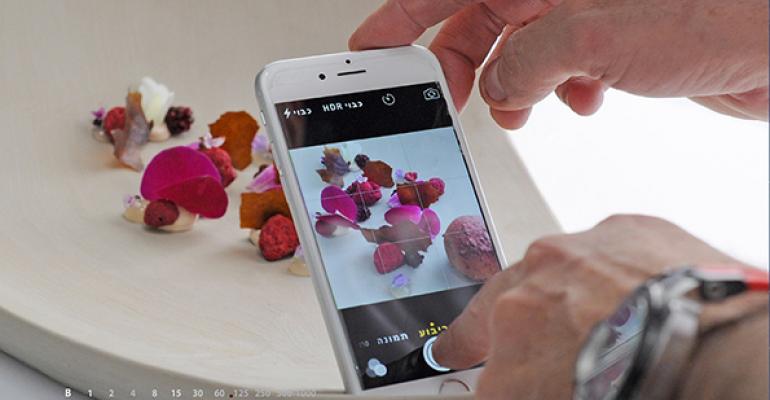Hate it when customers use your dining room as their personal photography studio, then post unappetizing shots of your food on social media sites? Tel Aviv restaurant Catit has found a way to solve this problem and make extra money while doing so. It puts five-course tasting meals on special food-photo-friendly plates and serves them to the snap-and-share crowd, charging customers $155 per hour to fine-tune their food photography skills while they eat.
Social media marketing wisdom holds that nothing makes an impact like drool-inducing food images that go viral. True enough, but poor-quality smartphone snapshots may have the opposite effect. They can make even the most desirable restaurant meal look like something no customer would want to eat (or sometimes even step in). Catit teamed up with leading Israeli wine producer Carmel Winery to upgrade both the images its customers produce and the experience these Instagrammers have while creating it.
Their project, “Foodography,” provides everything food-selfie photographers need to produce great pictures. Catit chef Meir Adoni composes and color-coordinates every dish of the five-course meal served to Foodography attendees. Each element is carefully chosen to look great on a plate.
But Catit doesn’t use just any plate. For Foodography, it partnered with noted Israeli ceramicist Adi Nissani. She came up with two types of plates specially designed to optimize the quality of food photos taken with smartphones.
One style, the Limbo, features a built-in smartphone holder and an upswept backdrop that keeps clutter out of the image. The other, dubbed the 360, spins around Lazy Susan-style, allowing a photographer to optimize the lighting and experiment with multiple angles for each shot. The 360 also gives smartphone-equipped videographers plenty of motion to capture.
Foodography’s third component is the presence of ace food photographer Dan Perez at its events. He provides hands-on instruction for those who want to upgrade their photo-taking skills while they dine. This video shows how a Foodography event works:
It turns out there are plenty of food-obsessed Instagrammers who find an event like this appealing. That’s exactly why Carmel Winery became involved. “We wanted to reconnect with a new generation of consumers,” a company spokesperson explains. “Youngsters who connect with food through the lens of a smartphone.”
Here in the U.S., many restaurants have already connected with this new generation. Some chefs and owners may even wish they were less connected, due to questionable selfie etiquette that occurs in their dining rooms. But providing customers with an optimal Instagram food photography experience might work, at least on a special-event basis, to your benefit. Think of it as a viral marketing tool where customers pay you up front, then disseminate images—good ones—of your restaurant’s food on multiple social media channels.





